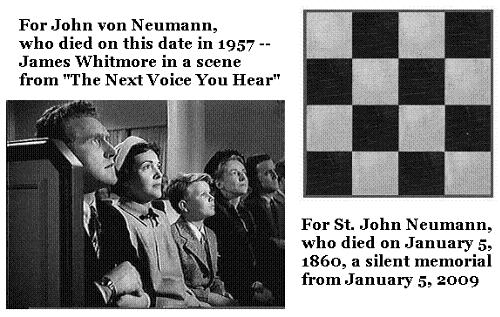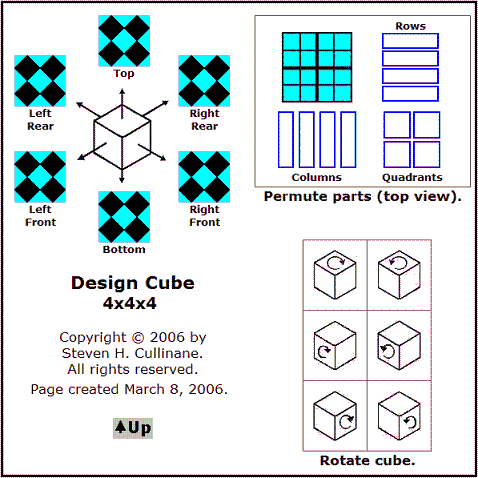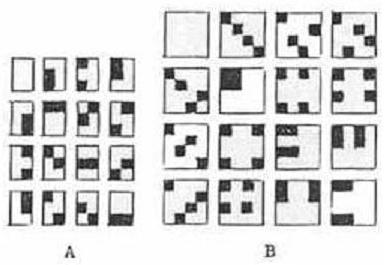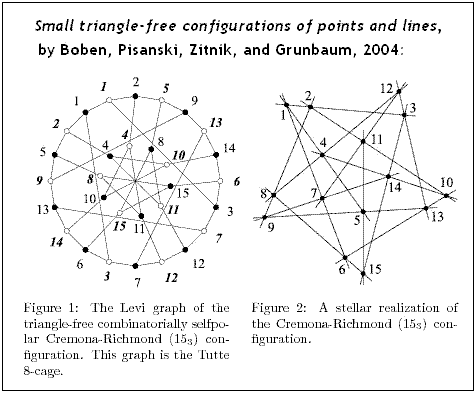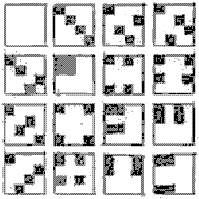A footnote was added to Finite Relativity—
Background:
Weyl on what he calls the relativity problem—

"The relativity problem is one of central significance throughout geometry and algebra and has been recognized as such by the mathematicians at an early time."
– Hermann Weyl, 1949, "Relativity Theory as a Stimulus in Mathematical Research"
"This is the relativity problem: to fix objectively a class of equivalent coordinatizations and to ascertain the group of transformations S mediating between them."
– Hermann Weyl, 1946, The Classical Groups , Princeton University Press, p. 16
…. A note of Feb. 20, 1986, supplied an example of such coordinatizations in finite geometry. In that note, the group of mediating transformations acted directly on coordinates within a 4×4 array. When the 4×4 array is embedded in a 4×6 array, a larger and more interesting group, M 24 (containing the original group), acts on the larger array. There is no obvious solution to Weyl's relativity problem for M 24. That is, there is no obvious way* to apply exactly 24 distinct transformable coordinate-sets (or symbol-strings ) to the 24 array elements in such a way that the natural group of mediating transformations of the 24 symbol-strings is M 24. ….
Footnote of Sept. 20, 2011:
* R.T. Curtis has, it seems, a non-obvious way that involves strings of seven symbols. His abstract for a 1990 paper says that in his construction "The generators of M 24 are defined… as permutations of twenty-four 7-cycles in the action of PSL2(7) on seven letters…."
See "Geometric Interpretations of the ‘Natural’ Generators of the Mathieu groups," by R.T. Curtis, Mathematical Proceedings of the Cambridge Philosophical Society (1990), Vol. 107, Issue 01, pp. 19-26. (Rec. Jan. 3, 1989, revised Feb. 3, 1989.) This paper was published online on Oct. 24, 2008.
Some related articles by Curtis:
R.T. Curtis, "Natural Constructions of the Mathieu groups," Math. Proc. Cambridge Philos. Soc. (1989), Vol. 106, pp. 423-429
R.T. Curtis. "Symmetric Presentations I: Introduction, with Particular Reference to the Mathieu groups M 12 and M 24" In Proceedings of 1990 LMS Durham Conference 'Groups, Combinatorics and Geometry' (eds. M. W. Liebeck and J. Saxl), London Math. Soc. Lecture Note Series 165, Cambridge University Press, 1992, pp. 380–396
R.T. Curtis, "A Survey of Symmetric Generation of Sporadic Simple Groups," in The Atlas of Finite Groups: Ten Years On , (eds. R.T. Curtis and R.A. Wilson), London Math. Soc. Lecture Note Series 249, Cambridge University Press, 1998, pp. 39–57

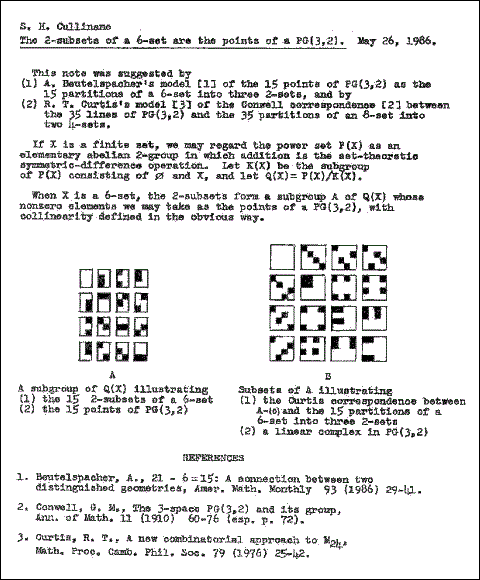

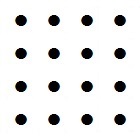
 .
.



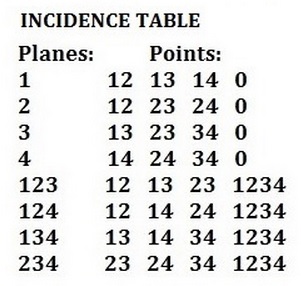












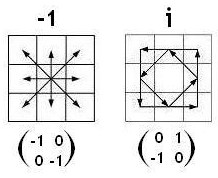




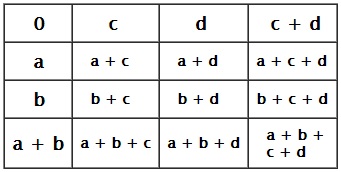

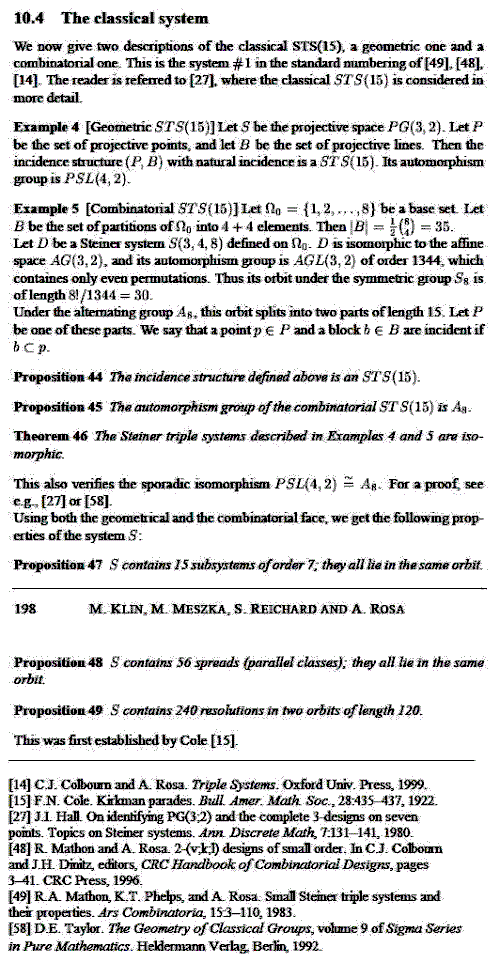










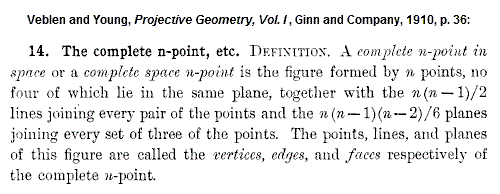







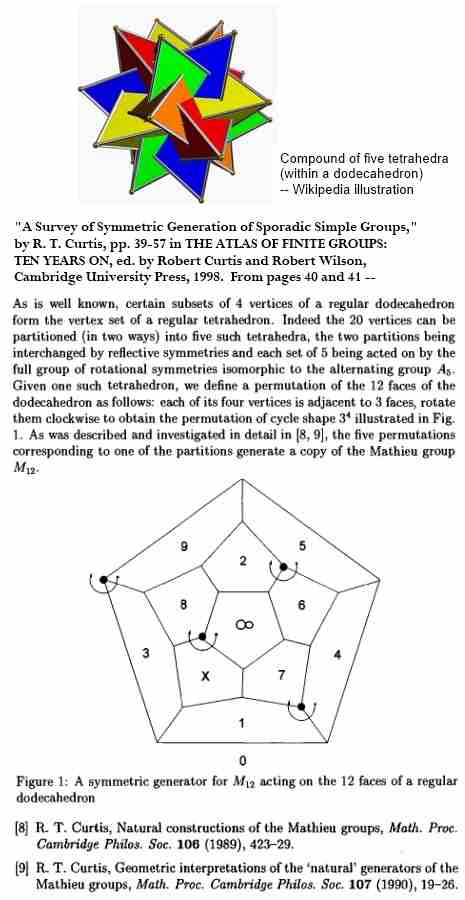










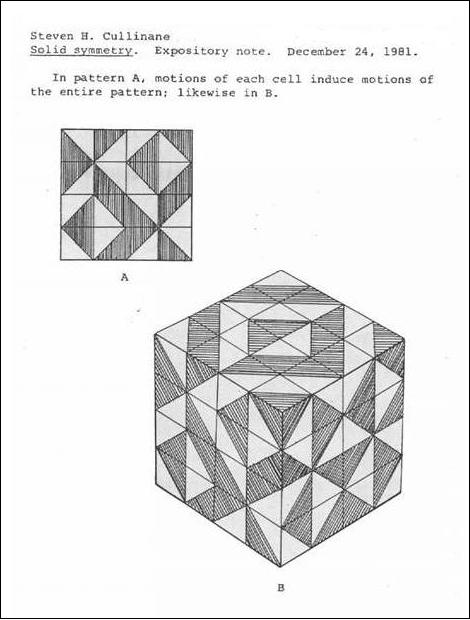
_lines_as_arrays-500w.jpg)



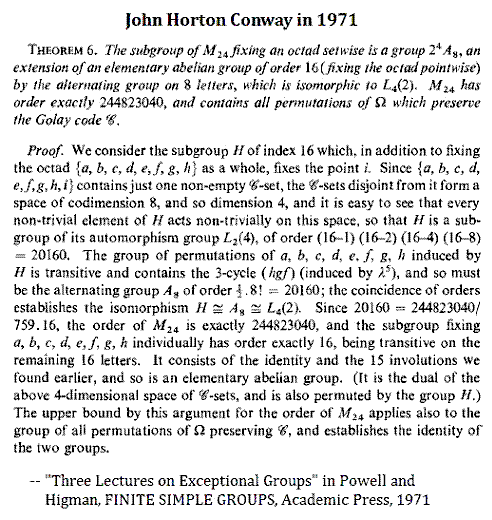



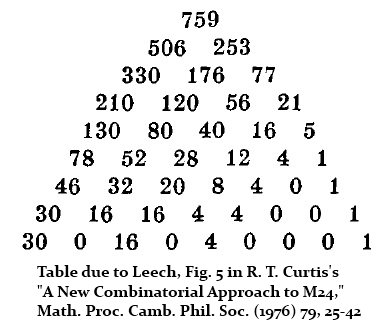


















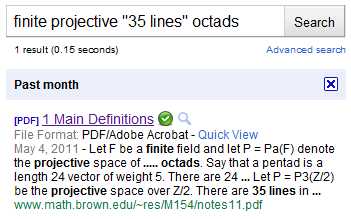











 pure as one of Bach's inverted canons or Euler's formula for polyhedra."
pure as one of Bach's inverted canons or Euler's formula for polyhedra."
